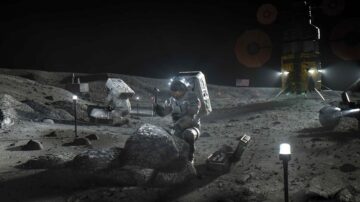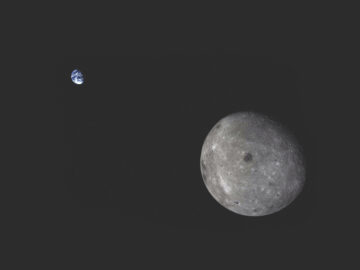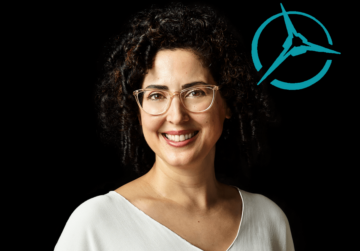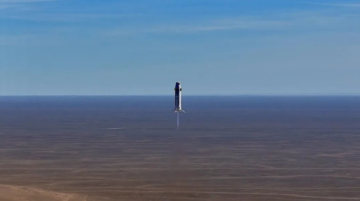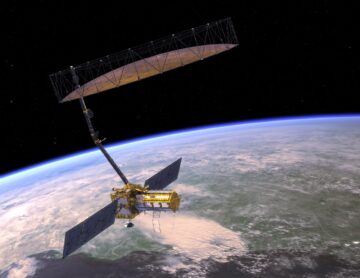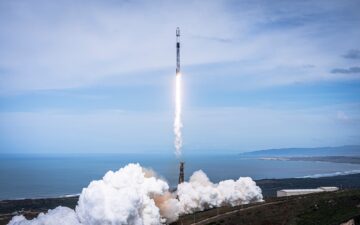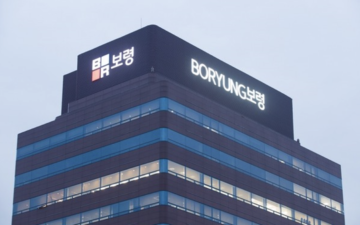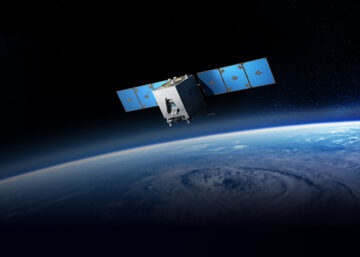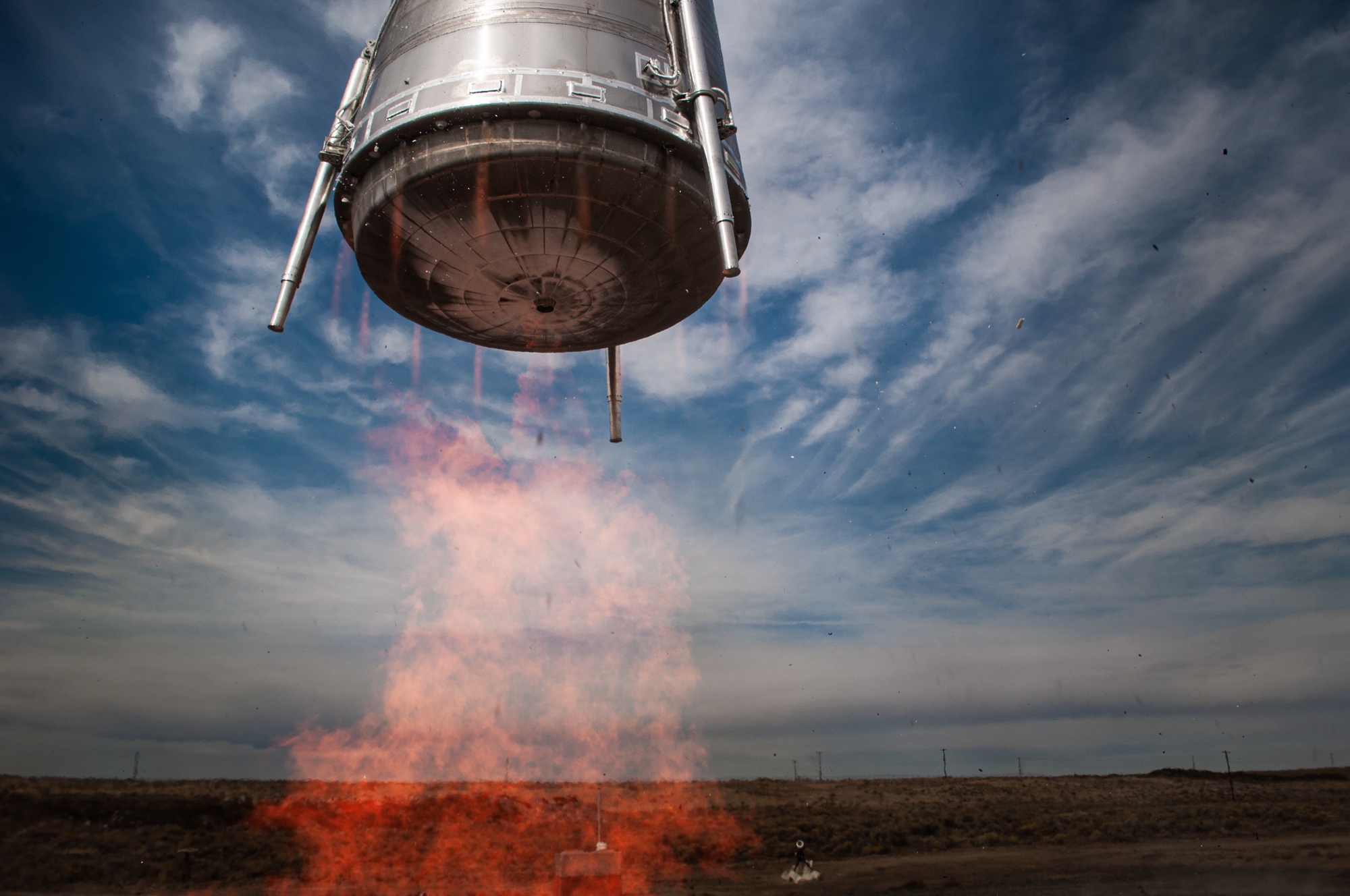
WASHINGTON — A small hop by a prototype upper stage was a big step in Stoke Space’s efforts to develop a fully reusable launch vehicle.
Stoke Space said it flew its Hopper2 vehicle at a test site at Moses Lake, Washington, Sept. 17. The vehicle, using an engine powered by liquid hydrogen and liquid oxygen, rose to an altitude of about nine meters before landing safely to conclude the 15-second flight.
The flight concluded the Hopper effort to develop technologies for a future reusable upper stage. “We successfully completed all of the planned objectives,” the company said in a statement after the test. “We’ve also proven that our novel approach to robust and rapidly reusable space vehicles is technically sound, and we’ve obtained an incredible amount of data that will enable us to confidently evolve the vehicle design from a technology demonstrator to a reliable reusable space vehicle.”
The hop came after a static-fire test of the vehicle. “We’ve now learned everything we were looking for from this dev test vehicle in order to finalize the orbital design,” the company posted on social media Sept. 12 after the test, but added it was going to perform a hop as the “icing on the cake.”
Andy Lapsa, chief executive of Stoke Space, said in an interview that the hop did allow for some additional testing, such as for position sensors. “It was the first opportunity to put every single component every single piece all together in the fully autonomous closed loop control system.” The flight was also a chance to look for “unknown unknowns,” or unforeseen issues that could be found only by flying the vehicle.
There were non-technical benefits to the hop as well, he added. “There is a very real emotional crescendo to a program like this to actually go and fly.”
Stoke Space, based in the Seattle suburb of Kent, Washington, is working on a fully reusable launch vehicle where both the booster and upper stage are recovered and reused. The company has raised about $75 million to date, including a $65 million Series A round in late 2021.
At the time the company said it would work first on the upper stage, which it saw as critical to creating a fully reusable vehicle. “We came to the conclusion that in order to do that, and to do that well, you have to know what a fully reusable second stage looks like,” Lapsa said. “We feel like we’ve done that now.”
He said the company is now ready to work on a reusable first stage that will be informed by the lessons learned on the upper stage. Factors like engine performance and the mass fraction of the upper stage will drive the design of the booster. “From those two things, you can start deriving everything else in the system.”
Stoke Space is already doing component-level testing for the engines on the first stage and building a structure. “We should see things coming together pretty quickly,” he said of development of a full-fledged orbital vehicle “Our internal goal is 2025. I think there are opportunities to accelerate things even compared to that. We are working as fast as we can.”
- SEO Powered Content & PR Distribution. Get Amplified Today.
- PlatoData.Network Vertical Generative Ai. Empower Yourself. Access Here.
- PlatoAiStream. Web3 Intelligence. Knowledge Amplified. Access Here.
- PlatoESG. Automotive / EVs, Carbon, CleanTech, Energy, Environment, Solar, Waste Management. Access Here.
- PlatoHealth. Biotech and Clinical Trials Intelligence. Access Here.
- ChartPrime. Elevate your Trading Game with ChartPrime. Access Here.
- BlockOffsets. Modernizing Environmental Offset Ownership. Access Here.
- Source: https://spacenews.com/stoke-space-flies-reusable-upper-stage-prototype/
- :has
- :is
- :where
- $65 million
- 17
- 2025
- a
- About
- accelerate
- actually
- added
- Additional
- After
- All
- allow
- already
- also
- amount
- an
- and
- approach
- ARE
- AS
- At
- autonomous
- based
- BE
- before
- benefits
- Big
- booster
- both
- Building
- but
- by
- CAKE
- came
- CAN
- Chance
- chief
- Chief Executive
- closed
- coming
- company
- compared
- Completed
- component
- conclude
- concluded
- conclusion
- confidently
- control
- could
- Creating
- critical
- data
- Date
- Design
- Dev
- develop
- Development
- DID
- do
- doing
- done
- drive
- effort
- efforts
- else
- emotional
- enable
- Engine
- Engines
- Even
- Every
- everything
- evolve
- executive
- factors
- FAST
- feel
- finalize
- First
- flight
- flying
- For
- found
- fraction
- from
- full-fledged
- fully
- future
- Go
- goal
- going
- Have
- he
- HTTPS
- hydrogen
- i
- in
- incredible
- informed
- internal
- Interview
- issues
- IT
- ITS
- jpg
- Know
- lake
- landing
- Late
- launch
- learned
- Lessons
- Lessons Learned
- like
- Liquid
- Look
- looking
- LOOKS
- Mass
- Media
- million
- non-technical
- novel
- now
- objectives
- obtained
- of
- on
- only
- opportunities
- Opportunity
- or
- order
- our
- Oxygen
- perform
- performance
- piece
- planned
- plato
- Plato Data Intelligence
- PlatoData
- position
- powered
- pretty
- Program
- prototype
- proven
- put
- quickly
- raised
- rapidly
- ready
- real
- reliable
- reusable
- robust
- ROSE
- round
- safely
- Said
- saw
- Seattle
- Second
- see
- sensors
- sept
- Series
- Series A
- series a round
- should
- single
- site
- small
- Social
- social media
- some
- Sound
- Space
- Stage
- start
- Statement
- Step
- structure
- Successfully
- such
- system
- technically
- Technologies
- Technology
- test
- Testing
- that
- The
- There.
- things
- Think
- this
- those
- time
- to
- together
- two
- unforeseen
- us
- using
- vehicle
- Vehicles
- very
- was
- washington
- we
- WELL
- were
- What
- which
- will
- Work
- working
- would
- you
- zephyrnet


